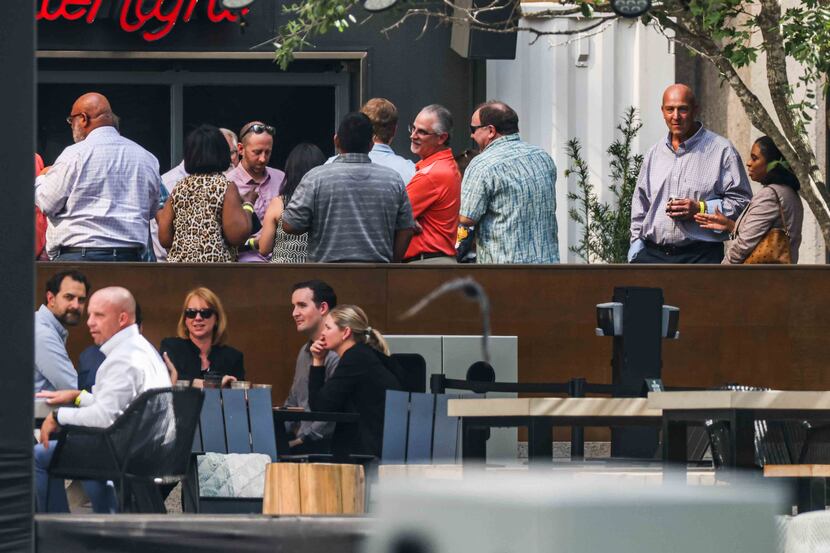In the last year, Nancy Procaccini, owner of Mama’s Daughters’ Diner in North Texas, has applied for more than a dozen loans and grants to keep her restaurants afloat. The restaurants are her late mother’s legacy, and there’s too much on the line not to exhaust every option to keep them going, she says.
Thanks to the federal Restaurant Revitalization Fund run by the Small Business Administration, the diners have a fighting chance to make it another year, Procaccini says. Three of her four locations received a total of $411,000 through the rescue program, which gave grants to businesses in the food industry that suffered pandemic-related losses.
But 12,000 other eligible Texas businesses that applied for the program weren’t so lucky.
Of the 101,000 restaurants and food businesses nationwide that were approved for grants from the now-empty $28.6 billion fund, 6,406 were Texas businesses that received a total of $1.6 billion. That left thousands of the state’s restaurants unfunded.
Restaurant industry leaders are lobbying for a second round of the federal program, arguing that the survival of countless businesses depends on it.
“We’re about $2.8 billion short of what is needed and what was requested out of just Texas restaurants,” says Emily Williams Knight, CEO of the Texas Restaurant Association. “There are 12,000 restaurants in Texas that did not receive a grant, and the only two states that are higher than that are California and New York. These are eligible applicants that missed the boat, and that’s a really large number of restaurants.”
The Texas Restaurant Association is one of a handful of groups nationwide that has advocated for a restaurant-specific federal rescue fund since last spring. The association pushed for a $120 billion fund based on what it calculated the need to be for struggling restaurants around the country, but the Restaurant Revitalization Fund offered up less than a quarter of that amount.
When the Restaurant Revitalization Fund launched in early May 2021, only businesses owned by women, military veterans and “socially and economically disadvantaged” individuals were given first priority for funding. But after lawsuits claiming that the race and gender prioritization was discriminatory, the SBA changed eligibility requirements and stopped payment on priority applications.
The Restaurant Revitalization Fund Replenishment Act, introduced by a bipartisan group of lawmakers in June, is pushing for an additional $60 billion in funding to be directed to the SBA to replenish the fund. But even $25 billion would be a welcomed amount, Knight says.
“There are still about 177,000 restaurants [nationwide] that were left in the dark. We’re working really hard to get a replenishment of ... at least $25 billion on this reconciliation bill that the Democrats are bringing forward,” she says.
Reports of boosts in business and rebounding sales at restaurants across the country don’t capture the margins restaurants are working with, she adds. Many restaurants and other food businesses are running unprofitably with the cost of wages and goods up significantly, and the surging COVID-19 cases are threatening progress in pandemic recovery efforts.
“In a 7% to 8% margin business, those types of cost pressures really put restaurants in a pinch, and so they still need this,” Knight says. “And now we have this emerging delta variant, and if that starts to sway consumer demand, our restaurants are going to be right back in the midst of it again, of just tremendous pain.”
For Procaccini, the grants she received provided a financial lifeline to float her through the wave of challenges she expects will come with the rise in COVID-19 cases from the delta variant. She said business at Mama’s Daughters’ Diner was reduced by 40% due to the pandemic, and federal aid kept the restaurants operating.
“These government loans and grants are the only reason I’m still in business, and I wouldn’t have made it without this money,” she said, referring also to the Paycheck Protection Program and COVID-19 Economic Injury Disaster Loan dollars she received last year. “I actually have [the Restaurant Revitalization Fund money] in savings because I’m a little hesitant to spend it right now. My operations need to be profitable, and we’re not right now because costs are up so much.”
She received $256,000 for the Dallas Design District location of Mama’s Daughters’ Diner, which had the greatest loss out of her four locations, $140,000 for the Plano location, and $15,000 for the Irving location. For now she plans to save the money, which can be used for a wide range of business expenses and doesn’t have to be repaid if used by March 11, 2023. Having that money in reserve is allowing her to raise employees’ wages without worrying about falling further behind.
“I really just want to hang onto this money to wait and see what happens, because this pandemic is not over,” she says. “My heart goes out to a lot of restaurants that have closed and those who applied for this grant money and didn’t get it.”
Other Dallas-area restaurants that received grants from the Restaurant Revitalization Fund are Bowl & Barrel, Toasted Coffee, Garden Cafe, Blackfriar Pub, East Hampton Sandwich Co., Smokey John’s Bar-B-Que and Soulgood, according to data from the Small Business Administration. The grant amount each business was eligible for was calculated by taking the difference between its 2019 and 2020 gross receipts minus Paycheck Protection Program loan amounts.

